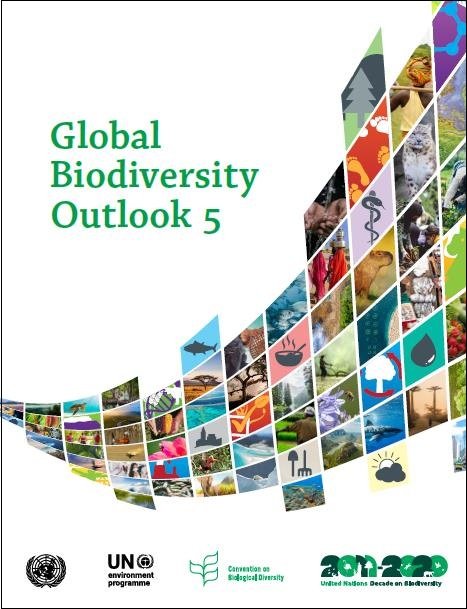 Read this article in French
Read this article in French- Share this article
- Subscribe to our newsletter
Global Biodiversity Outlook 5
Despite encouraging progress in several areas, the natural world is suffering badly and getting worse, the Global Biodiversity Outlook 5 (GBO-5) states. The report was published by the UN Convention on Biological Diversity (CBD)in September 2020. The authors describe eight transformative changes that are urgently needed to ensure human wellbeing and save the planet.
With respect to the Aichi Biodiversity Targets set in 2010, the analysis based on the 6th set of national reports to the CBD and the latest scientific findings shows that seven of 60 “elements” — success criteria — within the 20 targets have been achieved and 38 show progress. In the case of 13 elements, no progress was made, or a move away from the target was indicated, and for two elements the level of progress is unknown. The report concludes that, overall, six (9, 11, 16, 17, 19 and 20) of the 20 targets were partially achieved by the 2020 deadline.
By partially met, GBO-5 refers to targets where at least one distinct element has been met. For example, the elements of Target 11 regarding the proportions of lands and seas protected was met, but the elements related to the quality of protected areas were not. Similarly, for Target 19, biodiversity knowledge has improved but it has not been widely shared or applied. For Target 20, official development assistance doubled but resources did not increase from all sources.
The national reports to the CBD offer evidence that the types of transitions needed moving forward are beginning; that virtually all countries are taking steps to protect biodiversity. GBO-5 cites several exemplary national actions and programmes, in the absence of which conditions would certainly be worse (extinctions would be higher, for example).
The report calls for a shift away from “business as usual” across a range of human activities. It outlines eight transitions that recognise the value of biodiversity, the need to restore the ecosystems on which all human activity depends, and the urgency of reducing the negative impacts of such activity:
- The land and forests transition: conserving intact ecosystems, restoring ecosystems, combatting and reversing degradation, and employing landscape level spatial planning to avoid, reduce and mitigate land-use change
- The sustainable agriculture transition: redesigning agricultural systems through agroecological and other innovative approaches to enhance productivity while minimizing negative impacts on biodiversity
- The sustainable food systems transition: enabling sustainable and healthy diets with a greater emphasis on a diversity of foods, mostly plant-based, and more moderate consumption of meat and fish, as well as dramatic cuts in the waste involved in food supply and consumption
- The sustainable fisheries and oceans transition: protecting and restoring marine and coastal ecosystems, rebuilding fisheries and managing aquaculture and other uses of the oceans to ensure sustainability, and to enhance food security and livelihoods
- The cities and infrastructure transition: deploying “green infrastructure” and making space for nature within built landscapes to improve the health and quality of life for citizens and to reduce the environmental footprint of cities and infrastructure
- The sustainable freshwater transition: an integrated approach guaranteeing the water flows required by nature and people, improving water quality, protecting critical habitats, controlling invasive species and safeguarding connectivity to allow the recovery of freshwater systems from mountains to coasts
- The sustainable climate action transition: employing nature-based solutions, alongside a rapid phase-out of fossil fuel use, to reduce the scale and impacts of climate change, while providing positive benefits for biodiversity and other sustainable development goals
- The biodiversity-inclusive One Health transition: managing ecosystems, including agricultural and urban ecosystems, as well as the use of wildlife, through an integrated approach, to promote healthy ecosystems and healthy people.
(UNEP/ile)
Read more at UNEP website and download the Global Biodiversity Outlook 5





Add a comment
Be the First to Comment